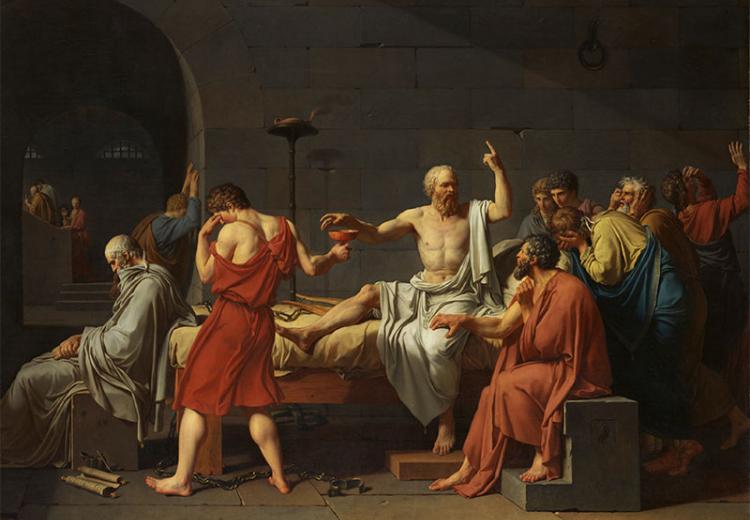Composition in Painting: Everything in its right place

Jacques Louis David, The Death of Socrates.
Why is it that when we walk into a museum so many people gravitate towards the same images? What is it that many of us find so sublime about a Caravaggio? Why do we often feel pulled into the domestic calm of a Vermeer? What is it about the rich and compact images of Frida Khalo that we find so irresistible? How do we know when a painting, a drawing, or a print "works"?
While it does not explain entirely the beauty—or the popularity—of any paintings or group of paintings, one of the most important components of paintings and drawings is its composition. The composition—the way in which a painting is composed and the way in which the painting's elements work together to form a coherent whole—is key to the success of a work of art in conveying its message and visually "hanging together." The composition is an important part of the foundation of the paintings we find so compelling. In this curriculum unit students will be introduced to composition in the visual arts, including design principals, such as balance, symmetry, and repetition, as well as one of the formal elements: line.
Guiding Questions
What is composition in the visual arts?
How do the artist's compositional choices convey feeling, tone, or information to the viewer?
How do compositional elements guide the viewer's eye around the canvas?
Learning Objectives
Define composition in the visual arts.
Identify elements of the composition in a variety of art works.
Explain how the artist's compositional choices work to guide the viewer's eye to important elements of the image.
Evaluate how the compositional structure of a work affects the tone of the painting, or communicates information or emotional content to the viewer.
Reflect on how each of these elements works to make the work successful as a painting.
